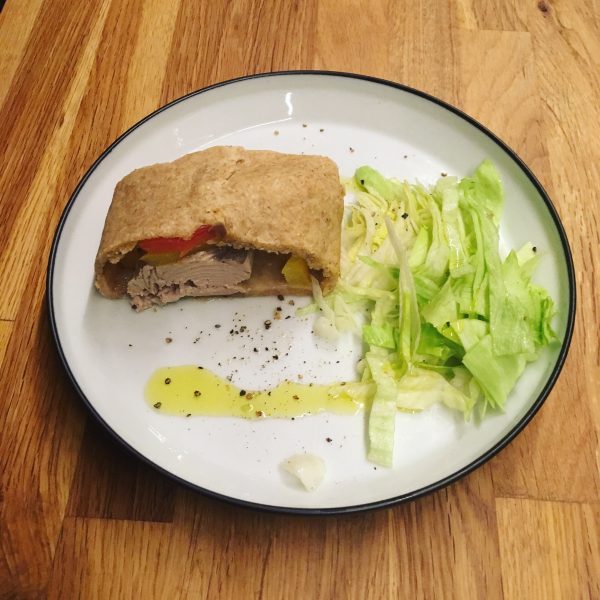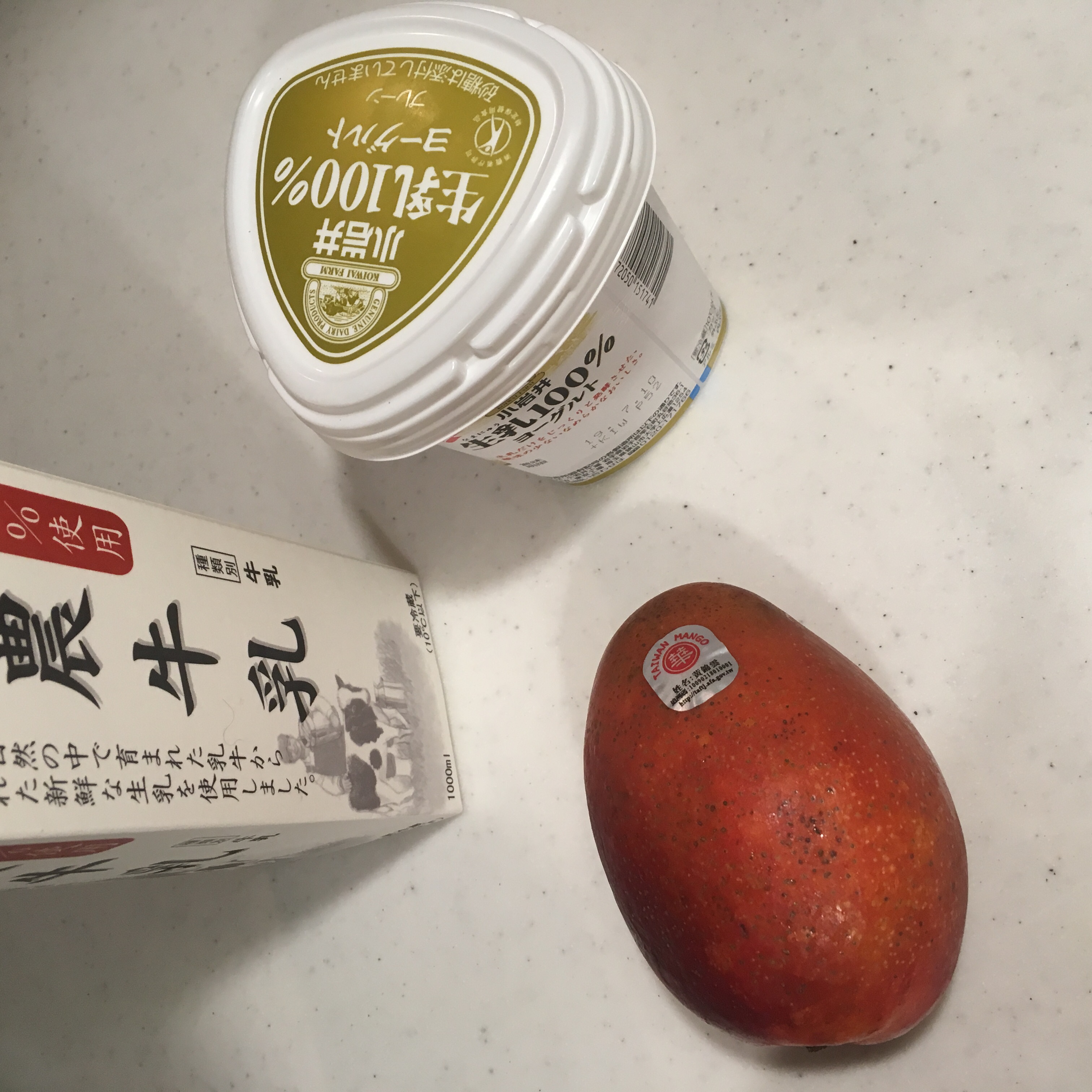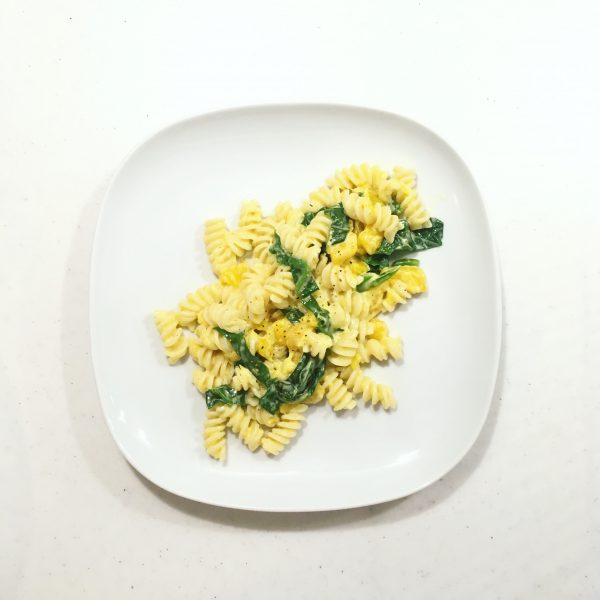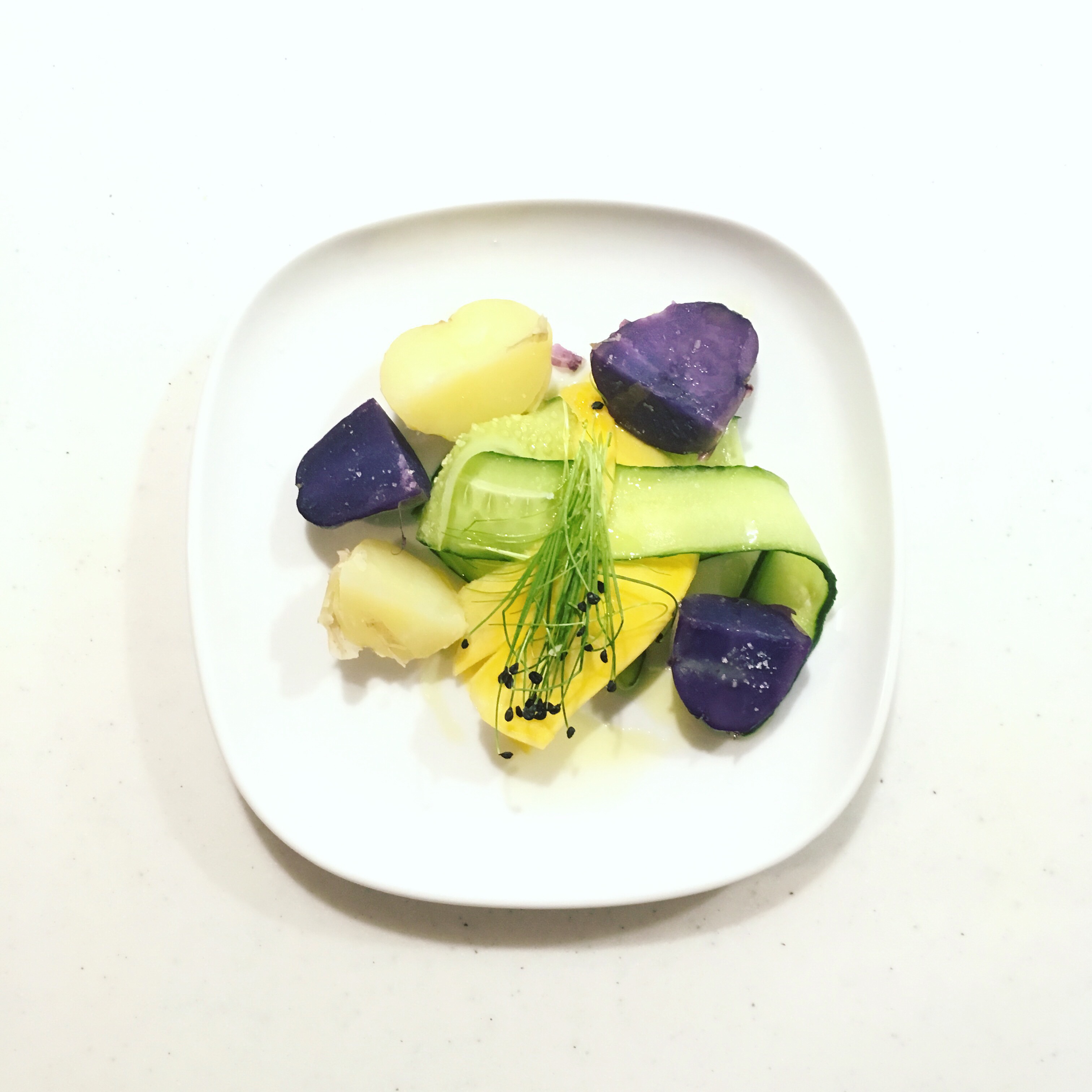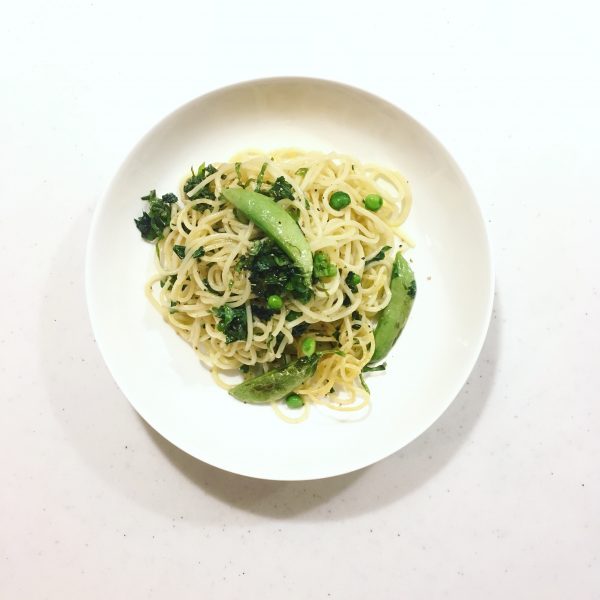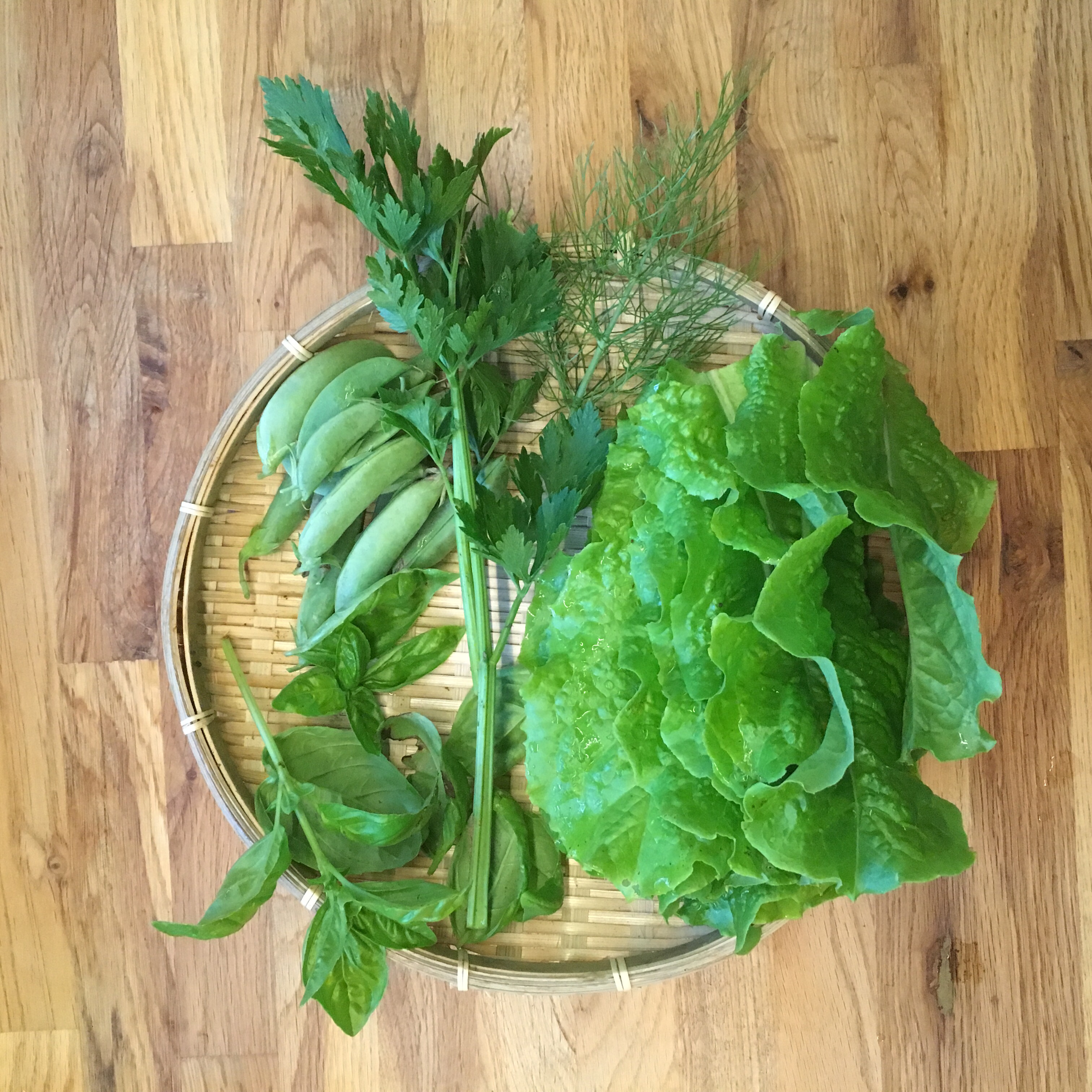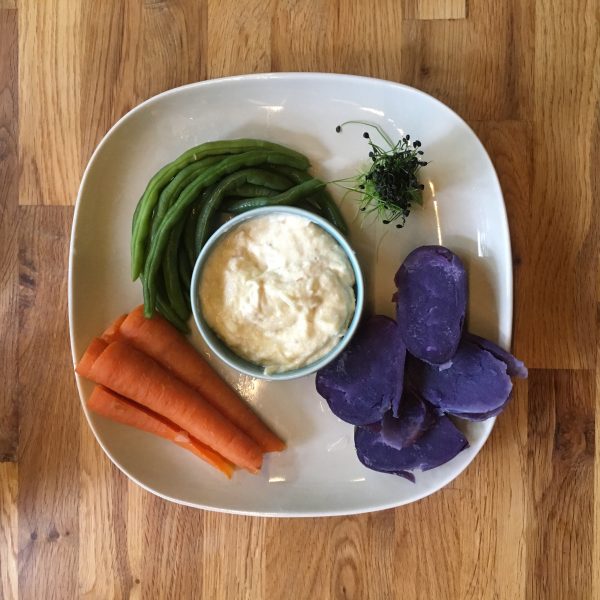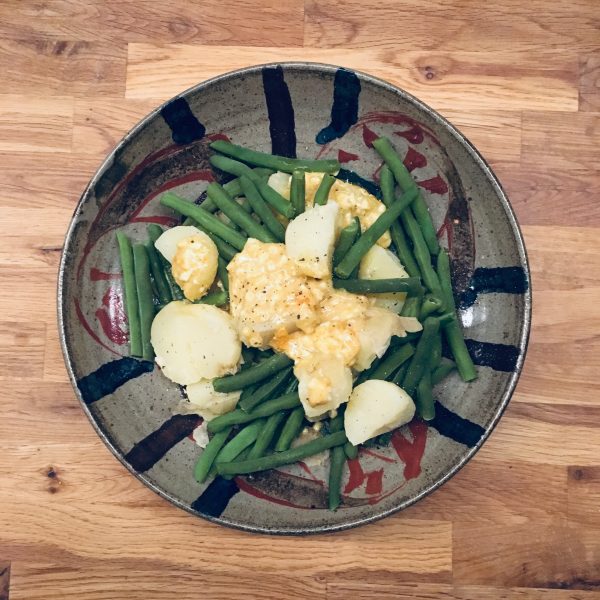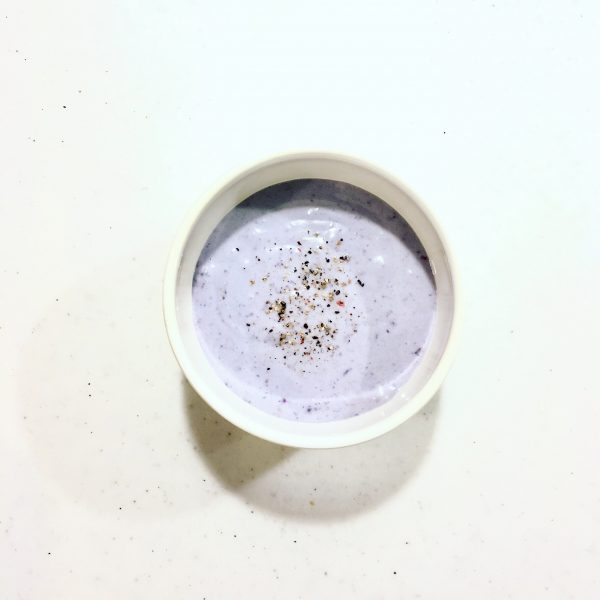Not far away from our house is Katsuura 勝浦, a city on the ocean with a fishing harbor, a fish market, a few nice street to browse and a sea front further south where we paddle surf (or least try to!!).
Katsuura is quite famous as a bonito fishing harbor in the area and they indeed have delicious fresh bonito in season, which is basically from spring to mid summer. We’ve eating quite a bit of bonito, and one of my classic way of preparing it is either pan grilled or in a sort of ragù with vegetables. But after a few times eating it that way always, I wanted a new recipe.
Inspired by the pies and other yummy pictures I saw on IG, I decided to try making a bonito pie. The shape of the filet is perfect to fit in a cake dish and with the season of bell peppers starting, I had a perfect combination. The pie cooking is quite interesting as all the juices and flavors are trapped in the pie and reveals when you cut it, guaranteeing a very interesting tasting experience. Though I could have worked a bit more on how to shape and plate it (as usual), the taste was amazing. Definitely a recipe that will go to my favorite recipes of the moment.
Bonito pie (2-3 servings)
For the pie crust
– 200g of flour (I used whole wheat)
– 4tbs of olive oil
– water
– a pinch of salt
For the filling
– 1 bonito filet (for sashimi)
– 2-3 bell peppers red, yellow, orange… you name it
– 2 leaves of laurel
– olive oil, salt and pepper
Prepared the pue crust. In a bowl, mix the flour, salt and olive oil. Add water little by little and knead until you have a smooth dough. Roll it in a rectangular shape to fit your cake dish, yet twice bigger.
Set it in the cake dish. Add the laurel leaves in the bottom of the pie, then add the bonito on top. Wash and slice the bell peppers. Arrange them around and on top of the bonito. Add salt, pepper and a bit of olive oil. Close the pie with the dough. Make a small hole on the top and make a small chimney with baking paper. Bake at 180deg for 40min. Or until golden.

